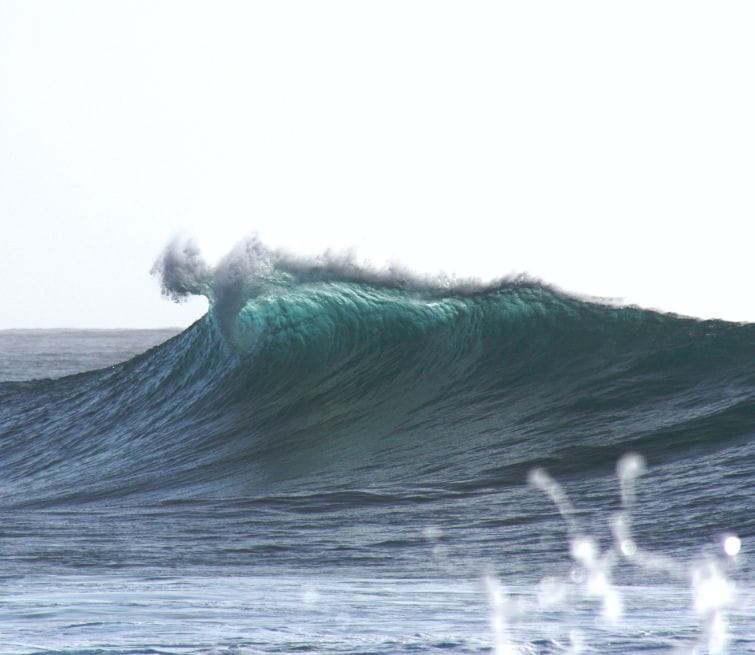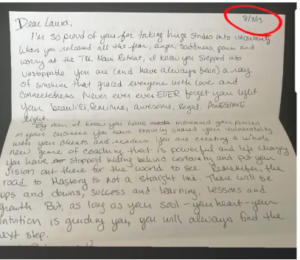“How do you want to feel?”
This is the question I learned to ask my massage clients.
It is a question that gives the responsibility of the outcome of the massage to the client rather than being solely the job of the therapist.
When I was a full time massage therapist, I cared more about how my clients felt IN their bodies than how their bodies felt. Does that make sense? I knew and understood the physiology, pathologies, and methods to use to ease pain and discomfort of their physical body, but I cared more about reducing their stress and getting them to breathe, and maybe even rest.
THAT was my goal.

I never liked the goal of the session being left open to me, which is often what would happen when new clients would say, “Just do whatever you feel.” I always wanted a starting point or a place to begin. More importantly, I wanted the clients to participate in their session. They needed to have ownership of the experience because if not, then I’m just pushing on tissue, not a whole being. The question of “How do you want to feel?” was the perfect way for my clients to know I wasn’t just there to manipulate their limbs, but that I wanted to bring ease to the whole of them.
Sometimes, clients didn’t know what to say. They’d answer, “I want to be relaxed.” That opened up possibilities for more questions: “Does relaxation feel refreshed or calm? Do you want to feel light like a cloud or grounded like a forest?” Sometimes I’d offer, “If you could be a color, what color would you want to be at the end of the massage?” And as they explored that answer, I’d add, “What color are you at now?” This would help me know where they were and where we had to get to. If they were feeling red and wanted to get to blue, that might take a bit, but if they were already feeling green, and blue was the desired feeling, it was closer because those colors are closer.
My all time favorite reply was “I want to be a smooth white pebble.”
“OOOOhhh, I like that,” I answered, “so you want to feel blank and fresh, like a clean slate?”
“Exactly.”
And that reply let me know where my energy needed to be to support her in our session. Sure, she might have had a specific issue as well, I don’t really recall, but I knew how to deliver a feeling of cleaning off the interior yuck she was experiencing so she could leave feeling blank, smooth and rested.
What does this have to do with navigating stillness? Well, I was the therapist you came to when you wanted to feel “put back together” as one of my therapist friends said. Stillness helps us put ourselves back together. Even if we’ve come undone in stillness, in the end, there is a completeness that happens. I wanted my clients to have stillness in their sessions with me, which is why I always started with a question of intent rather than a litany of their problems. I’d answer their questions and ask about pressure or inform them to turn or shift, but otherwise I stayed quiet so my clients could settle into stillness.
I allowed my clients a brief experience of stillness and how it can refresh and soothe.
However, it’s not always easy to get to stillness — inner stillness that is. You can’t just drop into it like dropping into a couch.
First you have to say “hello;” then, let yourself surrender and sink in. Just like in massage, I couldn’t simply start off the massage by grabbing a client’s trapezius muscles and squeezing like heck. I’d need to simply touch the skin, then move my hands around warming up the surrounding areas. Then I could apply more pressure and direct attention.
Stillness is the same.
You cannot expect it to be immediate. It is a relationship that requires trust and gentleness on the entrance and exit. In a massage, I would never end a session without letting my client know, hands motionless on their backs or feet, and my words, “Thank you for letting me work with you today,” informing them we were finished. I wouldn’t turn on all the lights and storm out, slamming the door. No, I’d turn on one soft light, if needed, leave the room, and quietly shut the door.
Exiting stillness requires the same gentleness for me. I need to honor the stillness by being gentle as I exit it.
Those sharp interruptions to my meditation or other moments of stillness are jarring and unsettling.
Going from stillness back to movement needs a space of gentleness. I need to return to my body and then my life in a way that allows the gifts I gain from being still to be savored a bit longer.
Choosing to enter stillness is also like choosing to get a massage. It always felt off to me when someone who received a gift certificate for a massage would come in because I often could tell they really didn’t want to be there. Massage benefits you when you willingly choose to be at the session, to be honest about the sensations of the body, and share what you really need.
Beginning and maintaining a practice of stillness is the same. I need to be willing to show up, remove the distractions, and be comfortable with the uncomfortableness of stillness. Yes, there are benefits from just attempting stillness, just as there are some benefits to receiving a massage even if you may not have wanted to at the beginning. Saying yes to the possibility of stillness, I believe, is a key to the impact that a session of stillness can have.
And it is a practice that I have difficulty maintaining. It is difficult because there are so many other things to do: laundry, work, clients, content creation, books to read, pages to color, distractions to use.

But when I do choose to say,
“Hello, stillness, I’m here for my session,”
I always feel better, and there is always a benefit, even if I plunge back into my day and distractions afterwards.
My body and spirit recognize we had a respite, and that matters.
Being from a society that cherishes and perpetuates motion and achievement, stillness is odd. I want to invite you to ask yourself, “How do I want to feel?” to enter a session with stillness.
Since stillness is vast, intimate, and wise, we may not receive an exact response to our answer, but it opens up the possibility to receive something… however intangible it might be.
stillness is vast, intimate and wise and opens up all possibilities.
MARY PAT CURRAN, LMT
BodyMind Coach
As the owner of Intentional Flow Mary Pat Curran coaches her clients using her gifts of presence and possibility. Mary Pat (MP) was an educator of adults & youth for 13 years prior to attending massage school. In 2013 she opened her own business and in 2018 began offering BodyMind Coaching as a missing piece for her clients’ transformation.
Mary Pat loves helping her clients learn more about themselves so that they can grow into their intentions without having to become someone else to succeed. Through embodying their unique values, goals, and desires. MP’s clients not only reach their goals, they become who they are meant to be.
Originally from Chicago, Mary Pat currently resides in Lexington, Kentucky with her hubby, children and dog.
IG: @IntentionalFlow
FB: Intentional Flow
LI: Mary Pat Curran




